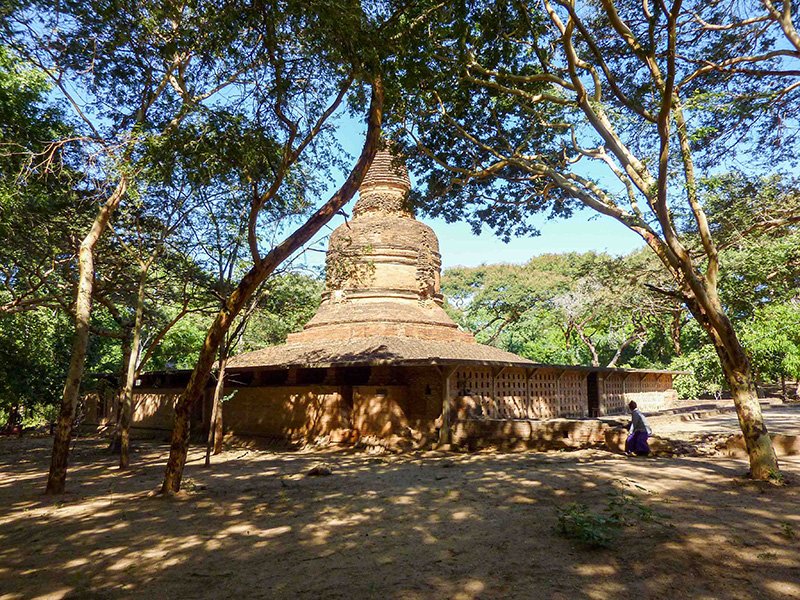Location: Close to Thiripyitsaya village and Shwesandaw Zedi.
Year Built: Probably in the early 11th century. Strachan writes that these buildings pre-date Anawrhata. This is because each stupa has the harmika between anda and finial. These structural elements may have been added later during the reign of Sithu II (1174-1211).
Builder/Monarch: Unknown, although it may have been King Anawrahta or his son King Sawlu.
Architectural details: Due to the user of unglazed terracotta during Anawrahta’s time, it is surmised that he must have added the jataka tiles. The tiles were exposed during excavations by the Archaeology Department in 1917.
Renovations: This temple was whitewashed in 1957. It was damaged in the 1975 earthquake and the spire was catapulted down all five of the terraces. It is still on the ground where it landed.
Terracotta votive tablets: Tablets with Anawrahta’s name were discovered in a relic chamber. According to Stadtner, over 20 small unglazed terracotta jataka plaques are associated with this stupa, but they are not inscribed with captions, so we don’t know which stories they represent. There are walls of unglazed jataka plaques in the close by Hpetleik stupas.
Stories about origination: It’s possible that these were prototypes for the Myin-pya-gu where another covered ambulatory gallery was built.
References:
Ancient Pagan: Buddhist Plain of Merit, Donald Stadtner, River Books, 2013
Pagan: Art and Architecture of Old Burma, Paul Strachan, Kiscadale Publications, 1989
Guide to Bagan Monuments by Min Bu Aung Kyaing, U Zaw Min Aye (Zaw Press), 2007
Inventory Of Monuments In Bagan, Pierre Pichard, UNESCO, 8 volumes, 1992-2001
